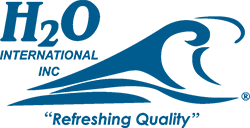FAQ
How much water should I drink?
The average adult needs 8 to 12 glasses of water per day. Hydration needs can vary based on level of activity, health circumstances, and age. As people age, they may need more water if they take prescription drugs, which can dehydrate the body.
What are the effects of Chlorine in our drinking water?
The US has been chlorinating its water supplies for over one hundred years. It is through this treatment method that we have been able to virtually wipe out water-borne diseases such as cholera and typhoid fever. Concerns over chlorine’s effect on the taste and odor of water have sparked heated debate, as has the possibility of chlorine as a potential carcinogen.
When chlorine breaks down organic material, it creates byproducts that can damage the heart, kidneys, nervous system, and lungs. These byproducts may also increase the incidents of certain types of cancer. Many articles have been written about THM’s (trihalomethanes) and their impact on our health. This is well worth your investigation. Data showing these results prompted the Environmental Protection Agency in the United States to respond with limits to the amount of chlorine byproducts permissible in drinking water. Eliminating the byproducts of chlorine should be a primary objective in any personal water treatment plan.
What technologies are available in Water Purification/Filtration?
- GAC/KDF
- KDF
- Carbon Block Filtration
- Ceramic Filtration
- Ultrafiltration
- Reverse Osmosis
- Ultraviolet
- Water Softening & Others
What is Granular Activated Carbon?
See GAC-related products
What is KDF?
See KDF-related products
What is a Ceramic Water filter?
A Ceramic Filtration System uses tiny pores on a ceramic surface to filter bacteria and sediment out of drinking water. It is an affordable and versatile water filtration system that can be installed in households or used as a portable filtration device.
A Ceramic Filtration System uses a natural ceramic filtration media as the heart of its water filtration process. The ceramic filter cartridge, often referred to as a ceramic filter candle, processes the water and removes contaminants through a network of pores. Ceramic filtration systems exist in a variety of applications. They can be gravity-fed, under-sink, countertop, or in some instances, used for a whole house or even light industrial processes.
What is Ultrafiltration?
Ultrafiltration (UF) uses standard home water pressure to push water through a semipermeable membrane and remove any contaminants. Unlike reverse osmosis, ultrafiltration retains minerals in the water, while filtering out bacteria, viruses, and parasites.
How does Ultrafiltration work?
Ultrafiltration is a one membrane filtration process that serves as a barrier to separate harmful bacteria, viruses, and other contaminants from clean water. An ultrafiltration water system forces water through a 0.02-micron membrane. Suspended particles that are too large to pass through the membrane stick to the outer membrane surface. Only fresh water and dissolved minerals pass through.
What is RO (reverse osmosis)?
See RO-related products
What does a typical RO system remove from water?
A Reverse Osmosis system (RO system) is a water purifier that reduces or eliminates nearly 50 different types of chemicals and other impurities. Some examples of what RO can remove include, but are not limited to, toluene, lead, PCBs, dichloropropenesx1, trichloroethanes, insecticides, and ethylbenzene.
What is Ultraviolet (UV) filtration?
A UV water filter is a purifier that kills harmful microorganisms in water with the use of germicidal ultraviolet (UV) light. UV water treatment is possible because UV light damages the nucleic acids in the DNA of microorganisms, thereby severely hampering their ability to reproduce or multiply.
What are the Advantages of Ultraviolet (UV) filtration?
There are numerous benefits to the use of UV water filtration. Therefore, this disinfecting method is still in existence even after over a century. So, what are the advantages of UV water purification?
- Cost-effective: Cost-effectiveness is one of the most significant benefits of using a UV water purifier. On average, you can get point-of-use home UV water purifiers for $250 and a whole house UV water filter system for about $1400. The systems also consume a small amount of energy (like a 60-watt light bulb).
- Chemical Free: UV water purification does not introduce chemicals into the water, and neither does it leave any harmful by-products.
- Free of Taste and Odor: Because UV water filters do not introduce chemicals into the water, the water retains its original taste, odor, and color.
- Extremely Effective: UV water purification eliminates about 99.99% of disease-causing microbes.
- Easy to Install: A UV water filter is easy to install.
- Low Maintenance: After the initial installation, little maintenance is required except for an annual bulb change, and other occasional maintenance.
- Efficient: In addition to requiring only a small amount of energy to run, the UV purification system does not produce any waste.
What is hard water?
Hardness in water can indicate high concentrations of calcium, magnesium, and other dissolved minerals. While magnesium and calcium are essential for our health and wellbeing, high amounts of these minerals in your tap water can cause several problems around your home.
How do I know whether my water is hard?
From cooking to cleaning, water is an important aspect of everyday life. While you may not feel the effects of drinking hard water, you may notice the impact it has on your home. Over time, hardness in your working water can cause damage to water-using appliances, including your washing machine, dishwasher, and hot water heater, as well as fixtures and drains.
Signs of hard water in your pipes include:
- Showers that don’t leave you feeling clean: Hard water can make it difficult for soap to lather, leaving a filmy residue on your skin and hair. Your skin may also feel sticky or dry after a shower.
- Soap scum: When hard water evaporates, it can create calcium deposits, which may lead to unsightly soap scum on your dishes, shower doors and fixtures.
- Buildup on fixtures and drains: Mineral deposits can clog your pipes and showerheads, which may cause plumbing issues over time.
- More stains: Iron in your water can create red or brown stains around water-using appliances, such as your toilet bowl and faucets. As long as hard water continues to run through your pipes, these stains may persist.
- Foul odors or tastes: Excess iron in your water can result in a metallic taste. Similarly, if magnesium and bacteria are present in your water, they may create sulfates, which can result in a rotten egg smell.
- Ineffective cleaning: Calcium and magnesium can prevent soap from effectively cleaning objects. They can also increase soil buildup, leaving you with scratchy clothes and towels.
What is Water Softening?
A water softener is a whole-house system that removes hardness-causing magnesium and calcium minerals from your water through a process called ion exchange. A water softener addresses one of the most prevalent and devastating water problems: hard water.
See Water Softening related products
What do I consider when purchasing a water treatment solution?
- Stay away from quick fix solutions
- Water pressure
- Water usage
- Water Hardness

